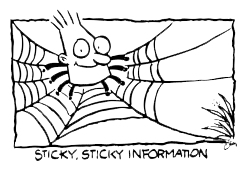Have you seen the “Daily Show” hosted by Jon Stewart. Every year, like any sensible person, Jon takes a break. But the “Daily Show” goes on. All the producers do is run some of the best of the “Daily Show” while John lounges on a beach somewhere.
You too need a “beach” scenario for your newsletter list
From time to time, you too need to re-run some of your articles, and there's a very good reason why. Though the article may seem old to you, remember that your list is always changing. More people subscribe to your newsletter all the time and though existing readers may have read your articles, newer readers have no inkling that those articles exist.
Yes, those articles may be in some blog or website archive, but no one really goes searching for a specific article. This is why re-running the article makes a lot of sense, especially for newer subscribers.
But what about existing subscribers?
You may assume that existing subscribers would be upset, wouldn't you? And yet they aren't upset at all. How many times have you read something or heard something and not acted upon it? The same applies to existing subscribers.
The first time you send out something, they may have not acted on it, or been too busy to read it on that day or just archived it, hoping that all the planets align and they'll be able to read 4456 archived articles at one go.
But today, yes today, when you send out your newsletter, they're less busy, or the article in question arrives at just the right moment. This causes them to read it afresh and act on the information.
This advice applies to sales letters as well
We'd been promoting a product for over two years to our list. One day a client bought the product, thinking it was a brand new product. When we assured her it was an existing product, she was surprised. So she dug right into her archive and found something extremely surprising.
Not only did she received the sales letters for close to two years, but even the wording of the sales letters hadn't changed in all of those years. It's just that she was ready at this point in time to receive and act on the message–and that's just what she did.
But is there a limit to recycling?
Not really. We've run some articles as many as six-seven times, but with a ton of space in between. So maybe we'd have run the article in December of 2004. Well, it probably ran in Dec 2006, 2007, 2009, 2011 and so on.
The same applies to the sales letters. They have a gap of several months, or even a year, depending on our sales schedule. So in reality you can recycle forever, as long as you don't get overly lazy and send it too often.
What you recycle may also matter
We tend to recycle some of our best-read articles, but also recycle articles that have nothing to do with our core business. So at Psychotactics, we're in the business of marketing. The articles that get recycled a lot have nothing to do with marketing. They have a lot to do with time-management, talent acquisition, courage, focus etc.
This is an important point to consider, especially when recycling your editorial. But it works for sales letters too. For years we've run the same “fairy godmother” sales letter for the Article Writing Course. And every time it gets the same results (the course often fills up in a few hours).
In fact, recycling can be made profitable and useful as well
Imagine we took every single article from Psychotactics and put it in a format (such as PDF or Kindle) that you could download and pay a small fee. Wouldn't you want the articles? I know I love to read the work of others, and if they took the time to put it together, I sure would buy it. And I know that others would want to buy such a product as well.
And how do I know this? Because in 5000bc, our membership site, I will often recycle older articles and put them into a report format called “Vanishing Reports”. Almost every time, there will be dozens of comments on the usefulness of the reports.
Bear in mind that nothing has changed, except the format (it's gone from the website to PDF/ePub). And yet the clients read it as if it were brand new and had immense value.
Because you know what–it does have immense value
Yes, the “Daily Show” re-runs its shows. And yes, Jon goes on a break. You should consider breaks such as these as well. If you stock away your articles for recycling, you can use them when you're super-busy, ill or just away at the beach.
The professionals do it–and profit from it.
Isn't it time you started doing it too?
“I have a business and attracting new customers require a continuous effort. I am always searching for ways to take my business to the next level.”
The Story Telling Mini Series gave me the road map for my web-site.
Demet Kitis, Canada
Judge for yourself: Story Telling Mini Series
NEW! The Brain Audit: Why Clients Buy And Why They Don't (Available in Different Formats)
Top Selling Products Under $50
1) Testimonial Secrets: Powerful Techniques to Get Better Clients-And Sales
2) Story Telling Series: How to suck your audience right in, in a matter of seconds
3) Sales Pages: How To Write Benefits and Bullets That Speed Up Sales
4) Article Writing: How To Speed Up Article Writing With Simple Outlines
5) Visual Basics: How Visuals Help Increase Sales Conversion On Your Website
6) Design Clarity: How to put sanity into your design with some really simple tweaks
7) Chaos Planning: How ‘Irregular' Folks Get Things Done
1) Black Belt Presentation Series: How to completely control the room—without turning anyone off?
2) Online Membership Sites: How To Build A Powerful, Community-Driven Membership Website



Hey Sean,
Great article – just a couple of typos. Jon (you spell it John once) hosts The Daily Show, not The Today Show.
Recycling may well be fine – the trouble many marketers make is email ‘overkill’ They can’t resist sending info out daily or even multiple times a day. In the real world this just annoys people which doesn’t lead to a happy customer..
A bit of common sense is needed when deciding what and how much you need to send.